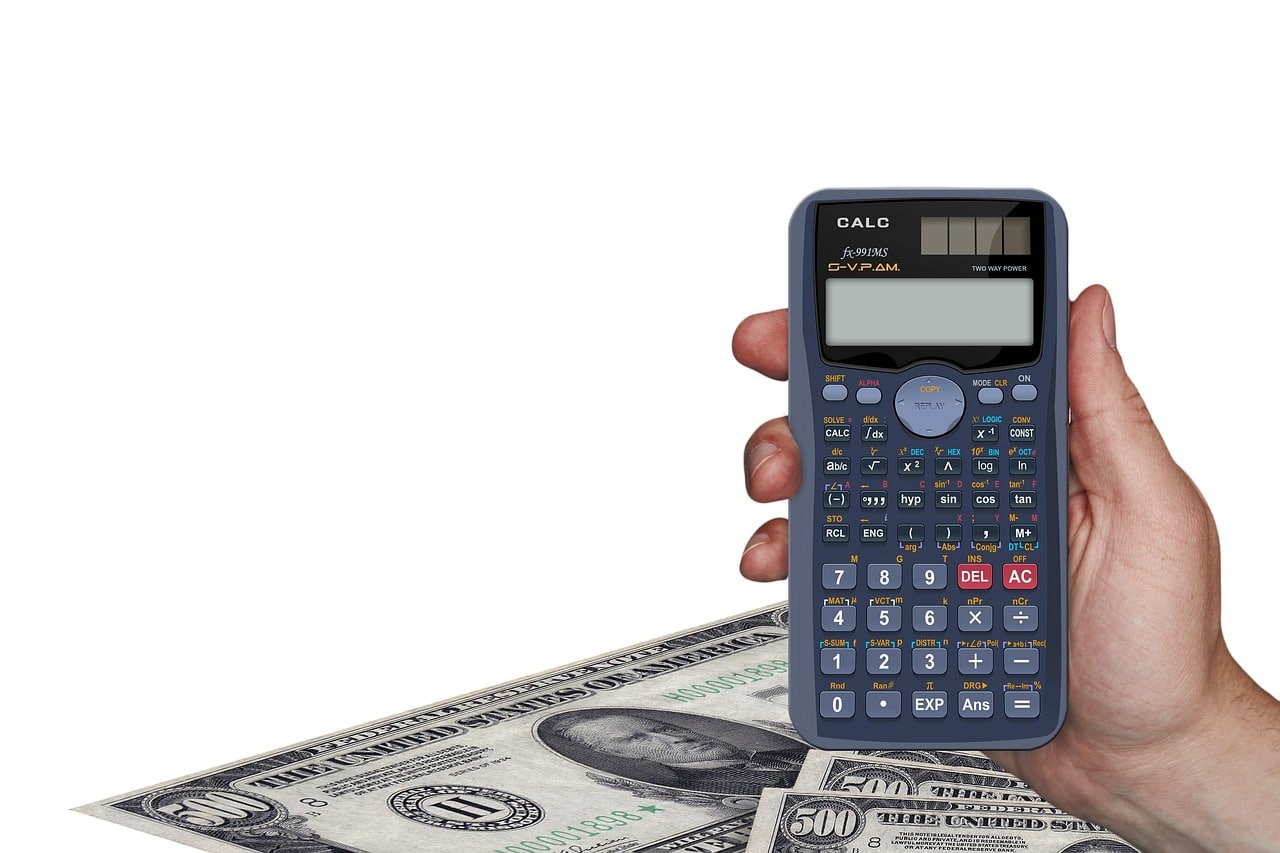How to Cut Back on Monthly Expenses

Reducing your monthly expenses means being more intentional about where your money goes, so you are not left wondering where it all disappeared by the end of the month. This might look like reviewing your fixed costs, rethinking everyday habits, or making small trade-offs that add up over time.
Learning how to cut back on monthly expenses starts with understanding your day-to-day spending.
Key Takeaways
- Tracking where your money goes is the first step toward better spending decisions.
- Small daily expenses can quietly impact your budget over time.
- Reducing subscriptions, planning meals, and shopping in bulk can lead to consistent savings.
- Smart use of public transit, carpooling, or remote work can lower commuting costs.
- Utility bills can be reduced with simple usage changes and regular maintenance.
- Affordable entertainment options can support a balanced lifestyle without overspending.
Understanding Where Your Money Goes
Without knowing where your money goes, saving money often feels like guesswork. Most expenses fall into two buckets: fixed and variable.
Fixed costs include rent, mortgage payments, utilities, insurance, and subscriptions. These tend to stay steady each month. Variable expenses, on the other hand, shift from week to week. This includes groceries, dining out, transportation, entertainment, shopping, and personal care.
Many people underestimate how much they spend on the small stuff. A few coffee runs, a couple of food delivery orders, or impulse buys at the store can quietly eat away at a budget. Nearly 77% of U.S. adults report that financial stress stems from unexpected expenses or rising costs. That’s where awareness becomes valuable.
By reviewing both categories, it becomes easier to spot spending habits that no longer align with your goals. Some fixed costs may be negotiable, such as switching service providers or eliminating duplicate subscriptions.
Variable spending usually holds the most flexibility. Identifying where money leaves your account most frequently can uncover areas to scale back without losing what matters most.
Easy Ways to Reduce Monthly Spending
Finding extra room in a monthly budget often starts with a few small, sustainable shifts. While some expenses remain fixed, others can be adjusted by tracking your spending habits, patterns, and recurring costs.
Cut Subscription Services You Don’t Use
Streaming platforms, mobile apps, digital storage, fitness memberships, and even monthly product boxes are easy to forget once the trial ends or the interest fades. More than 30% of consumers underestimate their monthly subscription spending, with the average total reaching $219.
The real cost comes from overlapping services or forgotten accounts that continue to renew without providing much value. Some people sign up with good intentions but find those services no longer fit into their routine. Others may not realize that multiple platforms offer the same content or features.
Reviewing monthly bank statements or using a subscription tracking tool can offer clarity. Canceling or pausing even one or two inactive services can make a noticeable difference. For those on tighter budgets, switching to free alternatives or bundling options can still provide access to entertainment or tools at a lower cost.
Lower Your Utility Bills Without Much Effort
Utility costs may seem fixed, but small adjustments in how energy and water are used can lower monthly bills. The average household spends over $2,000 a year on utilities. While rates depend on location and season, habits play a large role in driving those numbers.
Simple shifts, like turning off lights in unused rooms, unplugging devices that draw standby power, or running full laundry loads, can help. Using cold water for washing clothes and switching to LED bulbs also reduces long-term energy use. Heating and cooling costs tend to be among the highest, so even minor adjustments to the thermostat can lead to significant annual savings.
Water bills also add up. Fixing dripping taps, using low-flow showerheads, and shortening shower time can reduce costs without requiring major upgrades. Monitoring usage during peak billing cycles helps identify trends and opportunities for savings.
Simple Food Budgeting Hacks for Home Cooks
Food is one of the most flexible areas to adjust in a budget. The USDA estimates that a family of two spends between $614 and $963 per month on groceries, depending on dietary preferences and shopping patterns. Without a plan, frequent takeout or impulse buys can quietly stretch food expenses beyond what’s manageable.
Below are some simple and practical food budgeting strategies that many home cooks find useful:
- Plan meals in advance to avoid impulse spending: Creating a meal plan for the week helps reduce food waste and prevents last-minute takeout, which often costs more. It also makes grocery trips more efficient since you’re buying only what you need.
- Build your grocery list around what you already have: Checking your pantry, fridge, and freezer before shopping can help you use up existing ingredients and avoid buying duplicates. This simple habit stretches your grocery budget and keeps food from going unused.
- Buy pantry staples in bulk when it makes sense: Items like rice, oats, pasta, lentils, and canned goods typically have long shelf lives and lower per-unit costs when purchased in larger quantities. Buying these in bulk reduces your cost per meal and cuts down on frequent trips to the store.
- Choose store-brand products over name brands: Generic or store-brand items often deliver the same quality as name brands but at a lower price. Swapping even a few items each trip can result in consistent savings over time.
- Repurpose leftovers into quick, new meals: Leftovers can save both time and money when used creatively. Cooked vegetables can go into wraps or stir-fries, and extra protein can be added to salads or grain bowls. This approach helps minimise waste and simplifies weekday meals.
- Cook at home a few extra nights each week: Meals made at home generally cost less than restaurant food or delivery. Even replacing two takeout meals a week with home-cooked options can lead to noticeable monthly savings without sacrificing flavour or satisfaction.
- Use store loyalty programs, digital coupons, and weekly flyers: Most grocery chains offer reward programs or app-based discounts. These tools help cut down your bill on items you already plan to buy, especially if you shop during promotions or stock up during sales.
- Set a weekly food budget rather than a monthly one: Breaking your food budget into weekly portions makes it easier to pace your spending. This also helps avoid running short toward the end of the month and provides a clearer view of where your money is going week by week.
- Track food spending with budgeting apps: Budgeting apps help you monitor grocery expenses in real time. Some apps also categorize food spending separately, which makes it easier to see where small changes could add up.
These simple habits can help make food spending more predictable and sustainable. With a bit of planning, it’s possible to keep meals affordable without compromising on quality or variety.
Smart Shopping Habits That Help You Save
Day-to-day purchases may seem insignificant, but they collectively play a significant role in shaping monthly expenses. Being thoughtful about how and where you shop can lead to meaningful savings over time. With just a few habit shifts, everyday spending becomes easier to manage and less likely to strain your weekly budget.
Buy in Bulk Where It Makes Sense
Buying in bulk can lower the cost per unit, especially for items used frequently. Pantry staples, such as rice, pasta, flour, oats, and canned goods, often come at a lower price when purchased in larger quantities. The same applies to household items such as toilet paper, cleaning supplies, and laundry detergent.
The key is to focus on non-perishable or slow-to-expire items. Fresh produce or dairy products, for example, may not offer the same savings if they spoil before use. According to a report by the Food Marketing Institute, families who shop in bulk can save up to 27% on grocery costs when they plan effectively and avoid overbuying.
Bulk buying works best when paired with meal planning or a shared household. It helps cut back on frequent trips to the store and reduces the temptation to make extra purchases along the way. For many households, this approach brings long-term savings and adds a bit of predictability to the grocery budget.
Take Advantage of Coupons and Cashback Apps
Digital tools can help reduce costs on purchases you already plan to make. Coupons, promo codes, and cashback apps provide small discounts that often add up over time. Many stores now offer their own apps with weekly deals.
Nearly 90% of U.S. consumers used coupons in 2023, with digital coupons being the most popular format. Even a few dollars off each grocery or retail run can add up to make a significant difference by the end of the month. Cashback apps also offer rewards on categories like groceries, clothing, and household goods simply by scanning receipts or shopping through a specific link.
These tools are most effective when used in conjunction with planned purchases. Instead of encouraging extra spending, they help reduce the cost of items already on your list. Over time, shoppers who consistently use discounts and rewards often find that their spending feels more efficient and less reactive.
How to Save on Transportation and Commute
Transportation is a regular expense that can quietly take up a large share of the monthly budget. Fuel, maintenance, parking, and insurance all add up, even for short daily trips. In 2023, the average household spent over $13,174 annually on transportation. For many, this is second only to housing. Small changes to your travel habits can lead to consistent savings without significantly impacting your routine.
| Transportation Option | How It Helps Reduce Costs | Considerations Before Choosing |
| Public transit (bus, train, metro) | Lowers fuel, parking, and maintenance expenses. Monthly passes offer predictable pricing. | May require planning around set schedules. Coverage depends on your area. |
| Carpooling with coworkers or friends | Splits fuel, tolls, and even parking fees. Reduces daily wear on your vehicle. | Needs schedule alignment. May involve longer travel times or shared routes. |
| Remote or hybrid work setup | Eliminates or reduces commuting days. Cuts fuel, tolls, and vehicle use. | Not available for all job types. Home setup may involve other minor costs. |
| Biking or walking | Avoids all vehicle-related costs. Great for short distances and improves physical health. | Weather, road safety, and distance can be limiting factors. |
| Rideshare apps for occasional trips | Avoids ownership costs like insurance and maintenance. Works well for infrequent travel. | May become expensive if used frequently. Surge pricing can apply. |
| Combining errands into one trip | Cuts down on total miles driven. Saves fuel and time. | Requires advance planning and list-making. |
| Maintaining your vehicle regularly | Keep your car running efficiently. Helps prevent costly repairs or breakdowns. | Involves up-front costs for oil changes, tires, or tune-ups. |
| Choosing fuel-efficient vehicles | Uses less fuel per mile. Hybrids and smaller cars tend to cost less to run. | May require a larger initial purchase. Savings show over the long term. |
| Using gas price comparison apps | Helps locate the cheapest fuel nearby. Small savings add up over weeks. | Limited savings per trip but valuable for routine drivers. |
Trimming Unnecessary Lifestyle Expenses
Lifestyle expenses are often the most flexible part of a monthly budget. While these purchases may feel small or occasional, they can add up quickly. A few adjustments in how money is spent socially or for comfort can help ease pressure on the budget without completely eliminating enjoyment.
Small Daily Costs That Add Up Quickly
Everyday spending habits can quietly drain your finances. A coffee run, a food delivery order, or a quick online purchase may not feel like much at the moment. But over time, these saving routines start to shape the budget. An average American spends over $3,500 per year on non-essential items, such as dining out, subscription boxes, and impulse purchases.
Many of these expenses are driven by convenience. Food delivery fees, rush shipping, or purchasing bottled drinks on the go often cost more than homemade or planned alternatives. Even habits like using premium grooming products or frequent ridesharing contribute to monthly spending without always being noticed.
Being aware of where these costs show up can create more space for essentials or savings. Some people find it helpful to set weekly limits for flexible spending or to review bank statements for patterns.
Find Low-Cost Ways to Have Fun
Enjoying life and staying on budget can go hand in hand. Entertainment, social activities, and hobbies don’t have to disappear when trying to cut back. In many cases, they just need a shift in how they are approached. Swapping just a few outings for lower-cost alternatives can bring that number down without feeling like a sacrifice.
Many communities host free or low-cost events, such as movie nights, art walks, or local festivals. Public parks, trails, or beaches provide options for exercise and relaxation at no cost. Group activities at home, such as shared meals, book clubs, or game nights, can create a fun atmosphere while avoiding entrance fees, travel expenses, and the cost of expensive meals.
Cutting back on lifestyle costs simply involves being more intentional about what feels worth the spend. Over time, these small choices help build a budget that supports both financial goals and day-to-day enjoyment.
What to Do When Cutting Back Isn’t Enough?
For some households, reducing monthly expenses still might not bring enough relief. Fixed costs, such as rent, medical bills, or debt payments, can continue to consume a significant portion of the budget even after lifestyle changes have been implemented. In these situations, focusing on ways to bring in extra income or restructure financial obligations can offer additional support.
Here are a few practical approaches to consider when trimming expenses is no longer enough:
- Explore flexible side income options: Part-time work, gig platforms, or freelance services can offer ways to earn extra money around a regular schedule. Some people take on evening or weekend shifts, while others utilize skills such as writing, photography, or tutoring to earn money from home.
- Join paid research studies or panels: Participating in surveys, product testing, or focus groups can bring in small payments without a long-term commitment. Platforms like Focus Group Panel connect users with research opportunities that fit around their daily routine.
- Speak with service providers about payment plans: Many utility companies, internet providers, and lenders offer hardship programs or flexible billing options. Contacting them directly can sometimes reduce late fees or spread out large payments into smaller amounts.
- Consider refinancing or debt restructuring: Lowering interest rates or consolidating loans may reduce monthly payments. Some people find relief through nonprofit credit counseling or exploring federal assistance options if eligible.
- Sell unused items for short-term cash: Reselling electronics, clothing, or furniture can provide a quick cash boost. Local marketplaces or resale apps make it easier to connect with buyers.
- Look into public and community resources: Food banks, housing support, and job placement programs are available in many cities. These resources are often underutilized and can offer valuable assistance during challenging times.
Conclusion
Cutting back on monthly expenses often begins with small shifts. From tracking where money goes to reducing everyday costs, each habit helps shape a more manageable budget. These changes may not feel dramatic at first, but over time, they can ease financial pressure and bring more confidence to daily decisions.
Even with careful planning, there may be moments when trimming expenses falls short. In such cases, exploring new income opportunities or leveraging community resources can provide additional support. What matters most is staying flexible and open to what works best for your situation.
Platforms like Focus Group Panel offer a practical way to supplement income without taking on another job. By taking part in paid research studies, product testing, or online surveys, you can contribute your feedback and get compensated for your time. It’s a simple option that fits around your routine and helps bring a bit more balance to your financial life.
FAQ
Can Switching Banks Help Reduce Monthly Costs?
Yes, some banks charge monthly fees or minimum balance penalties, while others offer fee-free accounts and better interest rates. Switching to a more affordable option may help avoid unnecessary charges.
How Do Credit Card Habits Affect Monthly Spending?
Using credit cards for everyday purchases can lead to overspending, especially when interest and fees are added. Tracking balances and avoiding minimum-only payments can help manage costs more effectively.
Are There Ways to Save on Insurance Premiums?
Reviewing your policies annually may reveal discounts or better rates. Bundling services, raising deductibles, or improving credit scores can sometimes lower monthly insurance costs.
Can Changing My Phone or Internet Plan Lower My Bills?
Many service providers offer competitive pricing or discounts for auto-pay, loyalty programs, or bundle packages. Reviewing your usage and comparing offers may lead to noticeable savings.





